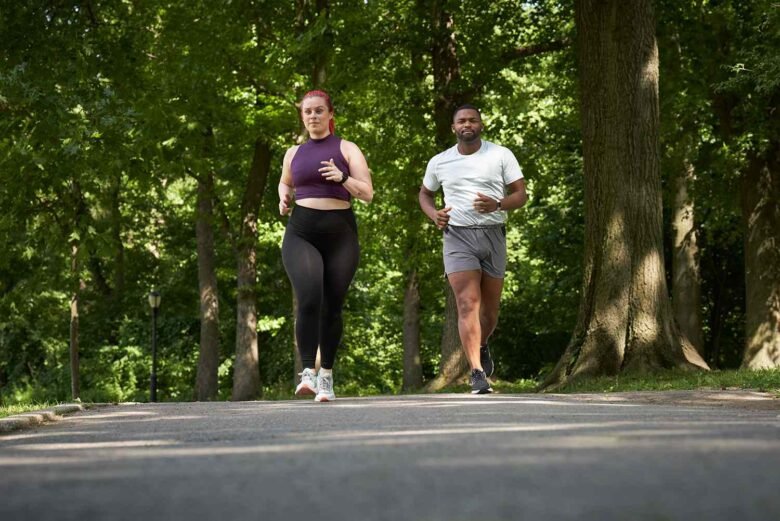When your weight loss progress stalls, it’s easy to think the answer is always more intense workouts or stricter dieting. But there’s another powerful, often overlooked factor: NEAT, or Non-Exercise Activity Thermogenesis. NEAT includes all the calories you burn through everyday activities outside of formal exercise — walking, fidgeting, standing, cleaning, even small movements like tapping your foot.
Increasing NEAT can help you burn hundreds more calories each day, preventing the metabolic slowdown that often causes weight loss plateaus. Plus, it’s a sustainable, low-stress way to break through stalls without drastically changing your diet or exercise routine.
In this article, you’ll get a practical, step-by-step guide to understanding, tracking, and boosting your NEAT naturally — turning everyday moments into effective fat-burning opportunities.
Why NEAT Is a Game-Changer for Weight Loss
The average person spends most of their day sitting, which drastically limits calorie expenditure. Formal workouts might burn a few hundred calories, but NEAT can add up to 200 to 800 additional calories burned daily, depending on your lifestyle.
When you’re in a calorie deficit, your body naturally tries to conserve energy, slowing your metabolism and decreasing spontaneous movement. This means you might feel more tired, fidget less, or move less without realizing it — contributing to a stall.
By consciously increasing NEAT, you can:
- Maintain a higher metabolic rate
- Avoid excessive fatigue from overtraining
- Protect lean muscle mass
- Improve overall health markers like blood sugar and cardiovascular function
To learn how NEAT fits into the broader strategy of overcoming stalls, see our main article: How to Overcome a Weight Loss Stall Naturally.
Step 1: Assess Your Current Activity Level
Before making changes, understand your baseline:
- Track your steps daily using a smartphone app or fitness tracker for 5–7 days. This gives you an idea of your typical activity.
- Log your sitting vs. standing time—do you spend most of your day seated?
- Identify sedentary habits such as prolonged TV watching, desk work without breaks, or driving everywhere.
Awareness helps identify realistic areas where you can add movement naturally.
Step 2: Set Clear, Manageable Movement Goals
If your daily steps are below 5,000, don’t jump to 10,000 overnight. Gradually increase by 1,000–2,000 steps daily until you reach 7,000–10,000, a range associated with better weight management and health.
Also set mini-goals like:
- Standing up every hour for 5 minutes
- Walking during phone calls
- Doing 5–10 minutes of light chores or stretching twice a day
Small, consistent changes add up and avoid burnout.
Step 3: Incorporate NEAT Into Your Daily Routine
Here are practical ways to increase movement without structured workouts:
- Take walking breaks regularly: Set a timer to remind you to get up every hour and walk around. Even 3–5 minutes of movement helps.
- Use stairs: Swap elevators for stairs whenever possible—this builds strength and burns more calories.
- Park farther away: When running errands or at work, park your car farther from entrances to add walking naturally.
- Walk or stand while on phone calls: Use hands-free or Bluetooth devices to move around.
- Household chores: Vacuuming, sweeping, gardening, or washing dishes are active and calorie-burning. Increase your effort to maximize benefits.
- Active hobbies: Dancing, playing with children or pets, gardening, or casual sports increase NEAT.
- Fidget and stretch: Small movements like tapping your feet, stretching, or pacing during TV ads keep your metabolism active.
Step 4: Use Tools and Environment to Your Advantage
Optimize your workspace and home to encourage movement:
- Standing desks: Alternate between sitting and standing every 30 minutes. This can increase calorie burn and reduce sedentary time.
- Balance boards or foot pedals: Use these under your desk to keep legs moving while working.
- Place items farther away: Store frequently used items on higher shelves or farther from your desk to encourage movement.
- Create reminders: Use alarms or apps to remind you to move.
Step 5: Add Micro-Workouts and Movement Bursts
Short bursts of activity throughout the day have significant benefits:
- Do 10 bodyweight squats while waiting for food to cook
- March in place during TV commercial breaks
- Perform calf raises while brushing teeth
- Stretch or do yoga poses between tasks
These micro-workouts keep your metabolism stimulated and add to your overall calorie burn.
Step 6: Avoid the Pitfalls of Excessive Formal Cardio
While cardio is beneficial, too much can increase stress hormones (like cortisol), potentially causing fat retention and plateaus. Combining NEAT with balanced workouts and nutrition is more sustainable and effective.
Learn how to balance exercise with calorie intake here: How to Naturally Adjust Your Calorie Intake Without Starving.
Step 7: Track Progress and Adjust
- Monitor your daily steps and activity weekly.
- If you hit a plateau again, find new NEAT opportunities: take longer walks, try active commuting, or new hobbies.
- Combine NEAT increases with macro balance (see The Role of Macros in Weight Loss) and proper calorie management.
Step 8: Prioritize Sleep and Stress Management
Poor sleep and chronic stress reduce spontaneous movement and increase sedentary behavior—undermining NEAT efforts. Prioritize good sleep hygiene and stress reduction to maximize your activity levels.
Explore practical tips here: Why Your Sleep and Stress Levels May Be Sabotaging Your Weight Loss.
Why NEAT Matters for Long-Term Weight Loss
Unlike formal exercise, NEAT can be maintained throughout life and doesn’t require a gym or special equipment. Increasing NEAT reduces the risk of burnout and injury and helps maintain a positive relationship with movement.
As part of a holistic approach—alongside balanced nutrition, proper sleep, and stress control—NEAT helps you overcome stalls and build sustainable habits for lasting weight loss.
Conclusion
Breaking a weight loss plateau doesn’t always require drastic measures. Simple increases in daily movement through NEAT can make a profound difference. Start by assessing your current activity, then gradually add steps, standing time, and micro-movements into your day. Use tools and environment cues to stay consistent.
Remember to balance NEAT with proper nutrition, macro intake, sleep, and stress management for the best results.



